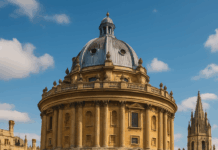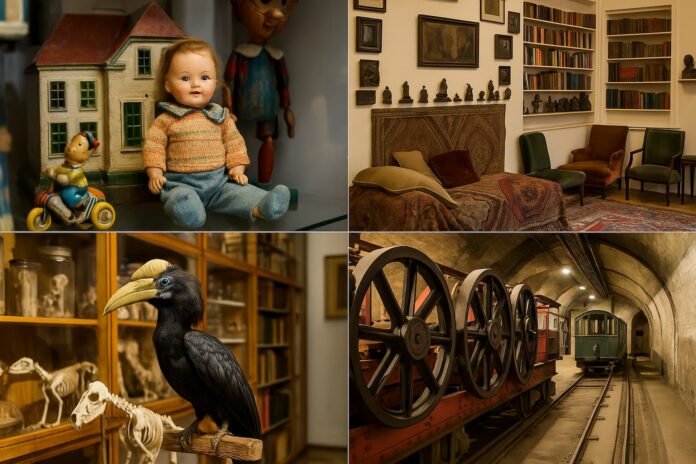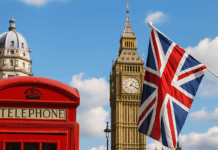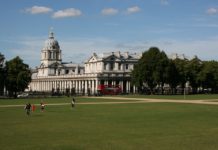Step off the beaten path and explore London’s hidden museums. From strange collections to eccentric passions turned into exhibitions, these quirky spots reveal a side of the city most tourists miss. Here are 20 unusual museums worth adding to your must-visit list.
Introduction
London’s cultural fame rests on giants like the British Museum and Tate Modern, but beyond those landmarks lies a city brimming with odd, unexpected, and fascinating museums. These places are not about grandeur but about curiosity, eccentricity, and storytelling through niche collections.
Whether it’s shrunken heads, Victorian classrooms, or fans used in secret romances, these museums bring history to life in ways the mainstream never does. If you’re looking for something different, these 20 quirky museums will surprise and delight you.
20 Quirky Museums in London
1. The Fan Museum (Greenwich)
The world’s only museum dedicated to the art of the fan. Exhibits span centuries, revealing fans as both fashion and status symbols. The museum highlights craftsmanship, history, and cultural traditions through beautifully preserved pieces that once carried hidden meanings in Victorian society.
- Tip: Don’t miss their afternoon tea in the Orangery.
- Did You Know? Fans were once used as a “language of love.”
2. The Cartoon Museum (Fitzrovia)
A lively museum celebrating Britain’s cartoon and comic art. From political satire to The Beano, it showcases witty, playful works that shaped British humor. The museum also explores modern graphic novels, giving visitors a chance to see how illustration has evolved over centuries.
- Tip: They run hands-on cartooning workshops.
- Did You Know? The UK’s first caricature dates back to the early 1700s.
3. The Clink Prison Museum (Southwark)
On the site of England’s oldest prison, dating back to 1144, this museum dives into grim tales of crime and punishment. Original artifacts, chilling stories, and replica torture devices highlight the cruelty of medieval justice and the lives of its unfortunate inmates.
- Tip: Great for lovers of dark history.
- Did You Know? The slang “clink” for prison comes from this site.
4. The Museum of Brands (Ladbroke Grove)
A nostalgic journey through packaging and advertising. The museum displays over 12,000 items, from Victorian tins to retro sweet wrappers, showing how branding reflects cultural shifts. Visitors experience a timeline of consumer history, sparking both memories and design inspiration.
- Tip: Popular among design and marketing students.
- Did You Know? It includes original wartime propaganda posters.
5. Grant Museum of Zoology (Bloomsbury)
A Victorian-style zoological collection with thousands of specimens. Highlights include extinct species, rare skeletons, and the famous “jar of moles.” The cramped, curiosity-shop atmosphere makes it feel like stepping back into a 19th-century naturalist’s workspace.
- Tip: Free to visit, perfect for a short stop.
- Did You Know? It holds bones from the long-extinct quagga.
6. The Horniman Museum (Forest Hill)
A quirky blend of anthropology, natural history, and music, with eclectic displays. Its most famous exhibit, a giant overstuffed walrus, continues to amuse visitors. Beyond the galleries, the museum’s gardens provide sweeping views of the city, making it a day-out destination.
- Tip: The aquarium is a hidden highlight.
- Did You Know? The walrus was stuffed by taxidermists who had never seen one alive.
7. The Cinema Museum (Kennington)
A shrine to cinema history, located in a Victorian workhouse once home to Charlie Chaplin. Collections include posters, cameras, costumes, and vintage projectors. Guided tours bring to life the golden era of film and its impact on British culture.
- Tip: Book guided tours for the full experience.
- Did You Know? Chaplin himself once lived in this very building.
8. The Freud Museum (Hampstead)
Sigmund Freud’s final home, preserved as a museum of psychoanalysis. Visitors see Freud’s legendary couch, thousands of books, and antiquities he collected. It provides insight into his life and ideas, offering a more personal look at one of history’s greatest thinkers.
- Tip: Explore the peaceful garden, designed by Freud’s daughter.
- Did You Know? Freud escaped Nazi-occupied Austria and moved here in 1938.
9. The Old Operating Theatre (Southwark)
Europe’s oldest surviving surgical theatre, hidden in a church attic. Exhibits reveal how Victorian doctors performed operations before anesthesia. Tools, displays, and reconstructions showcase both medical innovation and the harsh realities of 19th-century healthcare.
- Tip: Attend talks for vivid storytelling.
- Did You Know? It was rediscovered by accident in the 1950s.
10. The Magic Circle Museum (Euston)
A museum of magic housed within the Magic Circle headquarters. Displays include Houdini relics, Victorian tricks, and famous props. Because the Magic Circle is highly exclusive, visits usually involve special tours, giving it a mysterious allure.
- Tip: Book early for tours and events.
- Did You Know? The Magic Circle motto is “Indocilis Privata Loqui” — “Not apt to disclose secrets.”
11. The Ragged School Museum (Mile End)
A faithfully reconstructed Victorian classroom, offering a glimpse into the education of London’s poorest children. Costumed guides, wooden desks, and slates recreate a 19th-century schoolday, making it both interactive and immersive for families and history enthusiasts.
- Tip: Children can join roleplay lessons.
- Did You Know? Founded by philanthropist Dr. Barnardo in the 1870s.
12. Pollock’s Toy Museum (Fitzrovia)
A maze of small rooms filled with dolls, puppets, and antique games. The creaking staircases and dimly lit cases add an atmosphere of mystery, making it feel part museum, part time capsule. Both nostalgic and slightly eerie, it’s unlike any toy shop you’ve seen.
- Tip: Bring children for a magical afternoon.
- Did You Know? Pollock’s started as a Victorian toy theatre shop.
13. The Hunterian Museum (Lincoln’s Inn Fields)
This medical museum contains centuries of surgical history, with anatomical specimens and preserved organs. It highlights both the progress and the unsettling nature of early medical science. It’s a fascinating stop for those with a strong stomach and a curious mind.
- Tip: Free entry, ideal for short visits.
- Did You Know? Built from surgeon John Hunter’s 18th-century collection.
14. The Museum of London Docklands (Canary Wharf)
Set in a Georgian warehouse, this museum tells the story of London’s maritime trade, slavery, and dockside life. Exhibits combine immersive sets with detailed history, showing the Thames’ central role in the city’s growth.
- Tip: Free admission and family-friendly.
- Did You Know? Canary Wharf’s name comes from trade with the Canary Islands.
15. The Viktor Wynd Museum of Curiosities (Hackney)
An eccentric cabinet of curiosities mixing art, natural history, and the bizarre. Exhibits include shrunken heads, occult relics, and surreal objects. Part museum, part art project, it blurs the line between the academic and the absurd.
- Tip: Visit the cocktail bar downstairs.
- Did You Know? It calls itself “an inconsequential museum.”
16. The Household Cavalry Museum (Whitehall)
A working stable and museum showcasing the Queen’s Life Guard. Visitors can watch troopers caring for horses through glass panels while exploring exhibits on regimental history and tradition. It’s part live-action display, part cultural lesson.
- Tip: Arrive early to see the guard change.
- Did You Know? The guards serve both ceremonial and active combat roles.
17. The British Dental Museum (Marylebone)
A compact museum tracing the evolution of dentistry. From crude instruments to modern equipment, it shows how practices developed. The collection includes dentures, drills, and unusual treatments once thought standard. Fascinating for science fans, if a little unsettling.
- Tip: Expect a short, intense visit.
- Did You Know? Dentures were once made with real human teeth.
18. The Postal Museum (Clerkenwell)
Explores Britain’s postal history, from early communication systems to stamps and uniforms. The star attraction is the Mail Rail, an underground train that once carried millions of letters daily beneath London’s streets.
- Tip: Perfect for families with children.
- Did You Know? The Mail Rail moved 4 million letters every day.
19. The Garden Museum (Lambeth)
A museum dedicated to gardening, design, and landscape history. Located in a deconsecrated church, it celebrates Britain’s green-fingered heritage with tools, paintings, and modern exhibits. The tranquil gardens are a highlight for visitors seeking calm in the city.
- Tip: Don’t miss the award-winning café.
- Did You Know? Explorer-gardener John Tradescant is buried here.
20. The Museum of Happiness (Camden)
An interactive museum focused on joy, mindfulness, and well-being. Workshops include laughter yoga and creative play, making it a refreshing cultural stop. Unlike traditional museums, its goal is to boost your mood as much as your knowledge.
- Tip: Book ahead for workshops.
- Did You Know? It’s one of the few museums designed to make visitors happier when they leave.
Conclusion
These quirky museums prove London’s culture isn’t confined to grand galleries or monumental collections. They showcase eccentricity, passion, and hidden histories that reflect the city’s diversity and creativity. Each offers something different: humor, oddities, science, or nostalgia.
Next time you’re in London, skip the predictable tourist trail and venture into these unusual spaces. You’ll uncover stories that stick with you long after you’ve left, and maybe even discover a new favorite corner of the city.



























